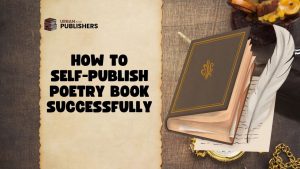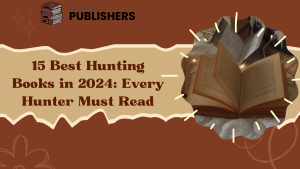
Writing
An annotated bibliography is more than just a list of sources; it’s valuable research. A tool that provides a summary and evaluation of each source’s content.
No matter if you are a student working on an academic paper, a researcher compiling references, or anyone seeking to organize. Understanding the process of writing bibliographies is important.
1. What is an Annotated Bibliography?
To better understand the “how,” let’s define the “what.” An annotated bibliography consists of a list of references to works… Refer to How to Find the Publisher of a Book for insight into source identification., such as books, articles, papers, websites, and so on, followed by a summary and evaluation of each source listed.
This annotation expands on the citation by providing a synopsis of the source and evaluating its usefulness to you and your work.
2. The Purpose of an Annotated Bibliography
Annotated bibliographies serve several critical purposes:
3. Information Organization:
An Annotated bibliography helps you keep track of your sources and organize them. Summarizing each source’s main points and figuring out its pros and cons, you can make a reference book that helps you research.
3.1 Critical Thinking:
When you write notes, you have to think critically about each source. You need to consider how reliable it is, how important it is to your topic, and what new ideas it gives you.
3.2 Resource Evaluation:
Annotations help others (like teachers, researchers, and peers) understand why you chose certain sources for your project and if they are worth looking into further.
3.3 Source Comparison:
Annotated references let you compare and contrast different sources on the same topic, which helps you understand the subject better.
4. Steps to Create an Annotated Bibliography
4.1 Select Your Sources:
Start by listing the sources you will use for your annotated reference. This could be a book, a piece from a magazine, a website like book publishers new york, or anything important to your study.
4.2 Cite Your Sources:
Create a correct reference for each source using a certain style (for example, APA, MLA, or Chicago). The reference in the Annotated bibliography should include important information like the author’s name, the title, the date it was published, and the source type.
4.3 Write the Annotation:
Each annotation should consist of the following elements:
4.4 Citation:
Start with the full citation in the chosen citation style.
4.5 Summary:
Provide a concise summary of the source’s content. Explain the main arguments, hypotheses, or findings presented by the author.
4.6 Evaluation:
Assess the source’s quality, reliability, and relevance to your research. Consider factors such as the author’s credentials, the source’s publication venue, and its timeliness.
4.7 Reflection:
Reflect on how this source fits into your overall research. Does it support or challenge your thesis or research question? How does it relate to other sources in your bibliography?
4.8 Be Concise:
Keep your comments short and to the point. Try to keep each comment to 150–200 words. The goal is to give people enough information to understand the source’s importance without giving them too much information.
4.9 Be Consistent:
Maintain consistency in formatting, citation style, and annotation structure throughout your bibliography.
4.10 Alphabetize:
Arrange your annotated bibliography alphabetically by the author’s last name or by the source’s title if there’s no author.
4.11 Revise and Proofread:
Review your annotations for clarity, coherence, and accuracy. Refer to Is Grammarly Premium Worth It? An In-Depth Review of Grammarly for editing tips.. Ensure there are no grammatical or typographical errors.
5. Importance of Annotation
It is important to know how to put together an annotated bibliography. It helps them better analyze things because they have to quickly review and gather knowledge from different sources.
This gives them the critical thought skills needed to do well in school. It also teaches students how to do research in a disciplined way by making them choose their sources carefully and check to see if they are relevant to their topics.
Annotated bibliographies are a great way for experienced writers to organize their knowledge, find study holes, and see how a field has changed over time. These lists not only help students cite sources but also let them join the intellectual conversation in their field.
It’s like a plan that helps researchers and students find their way through the complicated world of scientific writing. This helps them learn more about the topics they’re interested in.
6. Annotated Bibliography Examples
Let’s explore a couple of annotated bibliography examples to illustrate the principles discussed:
6.1 Example 1 (APA Style):
Smith, J. (2018). “The Impact of Climate Change on Biodiversity.”
This article, published in the “Journal of Environmental Science,” discusses the effects of climate change on global biodiversity. Smith provides a comprehensive overview of the current research in this field, highlighting how rising temperatures and shifting weather patterns affect ecosystems.
The author’s extensive experience as an environmental scientist lends credibility to the work, making it a valuable resource for researchers studying the intersection of climate change and biodiversity.
6.2 Example 2 (MLA Style):
Johnson, S. “Shakespeare’s Influence on Modern Literature.”
In this book, Johnson explores the enduring influence of William Shakespeare on contemporary literature. He examines how Shakespeare’s themes, characters, and storytelling techniques continue to resonate with writers today.
Although the book lacks recent updates (published in 2005), its in-depth analysis and rich insights into the literary legacy of Shakespeare make it an indispensable reference for scholars studying the evolution of literature through the ages.
6.3 Example 3(Chicago Style)
Smith, John. The History of Artificial Intelligence: From Turing to Deep Learning. New York: Oxford University Press, 2020.
In this comprehensive book, John Smith traces the evolution of artificial intelligence (AI) from its foundational concepts developed by Alan Turing to the contemporary era of deep learning and neural networks.
Smith’s historical perspective provides valuable insights into AI research’s major milestones and breakthroughs. He explores the contributions of key figures in the field and the development of AI applications across various domains.
7. Tips for Writing Effective Annotations
- Be concise but informative.
- Use clear and concise language.
- Focus on the source’s key points and contributions.
- Consider the source’s perspective and bias.
- Highlight the source’s relevance to your research.
Vital Aspects Unraveled
| Aspect | Details | Unique Twist |
|---|---|---|
| Definition | Brief explanation of annotated bibliography | An interesting fact or historical context |
| Purpose & Benefits | Summarizes the main purposes and benefits | A real-world application or example |
| Key Components | Lists the essential elements of an annotation | A tip or trick for each component |
| Writing Process | Outlines steps to create an annotated bibliography | Common pitfalls to avoid |
| Source Evaluation | Describes how to assess sources | A checklist for quick evaluation |
| Examples with Styles | Provides examples in APA, MLA, Chicago | An unusual or humorous example |
| Tips for Effectiveness | Offers advice for writing good annotations | A quote or advice from an expert |
Final Thoughts
Creating an annotated bibliography is a valuable skill that enhances your research and critical thinking abilities. It helps you assess the quality and relevance of sources, organize your research, and provide a roadmap for your project.
Whether you’re a student working on an academic paper or a researcher compiling resources for a project, mastering the art of writing annotations will serve you well in your scholarly pursuits.




